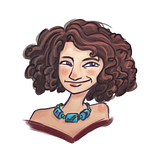Musée de l’Art Brut: Roger Ballen
I tend to go to exhibits rather blindly, that is to say, I don’t do my homework first. I think this is quite normal, but the academic inside of me feels a need to prepare in advance. Having prior knowledge tends to improve the experience, but at the same time, discovering a new art movement in a museum context is more exciting than the internet or in a book. Even a good book.
Honestly, this museum probably would have been one of the last museums I’d have visited just to check off all the museums. That’s what having artsy librarian friends is good for. I met this particular artsy librarian friend randomly in a bookstore near my apartment in Belleville. She was recommending graphic novels right and left to the two girls she was with, so I said to her, “it seems like you know a lot about graphic novels.” “Do you want a recommendation?” She asked me. Why, of course! And that’s how I became friends with Margot. Two days later she took me to her favorite museum in Paris, Musée de l’Art Brut.
The building was originally an old market hall. Essentially, it’s one large space that has been portioned off to serve varying purposes: a cafe, a bookstore deemed worthy by Margot, and one exhibition. This particular exhibition was called “The World According to Roger Ballen,” a South-African born photographer.
What do you know about art brut or “outsider art”? Something? Nothing? Here are a few excerpts from the exhibit before I spill the beans:
Even without a background in art brut, certain characteristics are immediately obvious: the work is rough, maybe even uncomfortable, there’s an instinctual animal quality to it. In Ballen’s exhibit, the latter was expressed more directly. Animals are included in just about every piece, occasionally juxtaposed with humans to blur the line between us. Margot confirmed my suppositions by giving me a quick overview of art brut: it’s art produced by people that don’t have fine art backgrounds, nor are affiliated through institutions. Usually, there’s a reoccurring theme, which gives the pieces an obsessive quality, especially when viewed as a series. It’s as if each photograph or sculpture is a spin-off of the precedent. As if the artist had a hunger for this topic, that couldn’t be satiated. I thought it was a little meta, (such as the picture above with the goat and a chalkboard drawing of the goat) or more eloquently express, there’s the use of mise en abîme, copying an image within itself. With my rudimentary art history background, I could see how art brut could be superficially compared to modern art with the classic grade-school scratchy drawings. However, it’s a bit less cold than modern art, perhaps more playful, which could explain why I connected with it more. This is true even though Ballen claims to speak to poverty and fear in South Africa. Upon reading the description of the exhibition at the entryway, I signed to myself, “Great, this is going to be depressing and heavy.” He nonetheless manages to make the subject lighter, though no less disturbing. Margot wittily described Ballen’s photographs as a “bon misère” or a “good misery.”
With sculptures, photographs, old horror film-like dolls, mannequin settings, and artsy videos, Roger Ballen seems rather prolific, testing out various mediums and ways of expression. He even caught the attention of the cult group, “Die Antwoord,” which I find compliments his art rather well.
At the end of our visit, Margot said “c’est certain que je vais faire des cauchemars ce soir,” I’ll certainly have nightmares tonight. I never asked her if she did, or not.
If you want to read a more professional description of the exhibition and explore the museum, go here.
